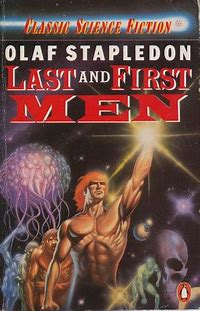beginnings, endings and new beginnings;
birth, growth, death and regrowth.
Myths reflect life:
Ginnungagap and Ragnarok;
death and renewal;
a new heaven and a new earth;
old gods and new gods.
Science confirms cosmic beginnings and endings:
monobloc and heat death;
between them, stellar condensations and destruction;
second generation stars and planets, including life on Earth reflected in myths.
Thus, myths are a major part of human life which is a very small part of the cosmic process.
Science fiction generates modern myths out of a scientific worldview. In the Preface to what science fiction readers call his "future history," Last And First Men (Harmondsworth, Middlesex, England, 1972), Olaf Stapledon writes that this novel is neither prophecy nor futuristic historiography, nor does he aim merely "...to create aesthetically admirable fiction." (p. 11) Instead, the book "...is an essay in myth creation." (p. 12)
"A true myth is one which, within the universe of a certain culture (living or dead), expresses richly, and often perhaps tragically, the highest admirations possible within that culture." (p. 11)
Several of Poul Anderson's works are Stapledonian in their scale and scope:
" 'The universe - the whole universe - it's dying.' " (Tau Zero, London, 1973, p. 170)
" 'I propose we go on to the next cycle of the cosmos.' " (ibid, p. 174)
Here is the ultimate death and renewal. The child born in "...the ship of man..." will not be called Eve or Embla because her parents do not want her to be a symbol but, by mentioning these names at this crucial point, Anderson closes the circle between the old myths and this new story. (pp. 180, 181)

No comments:
Post a Comment